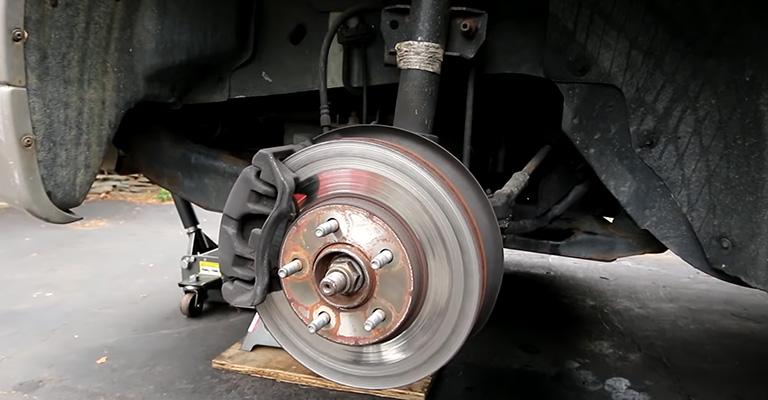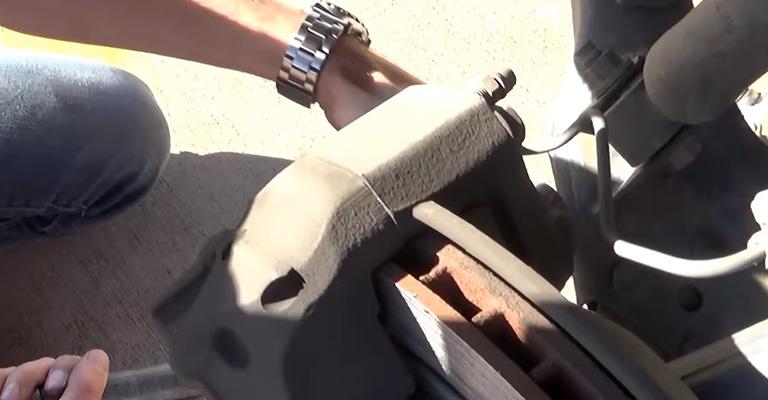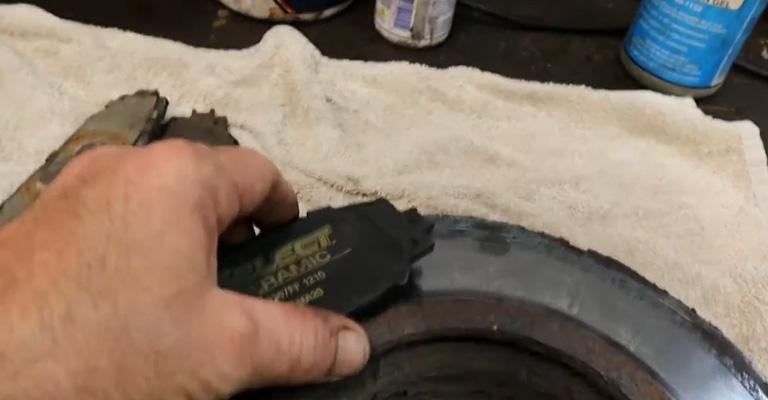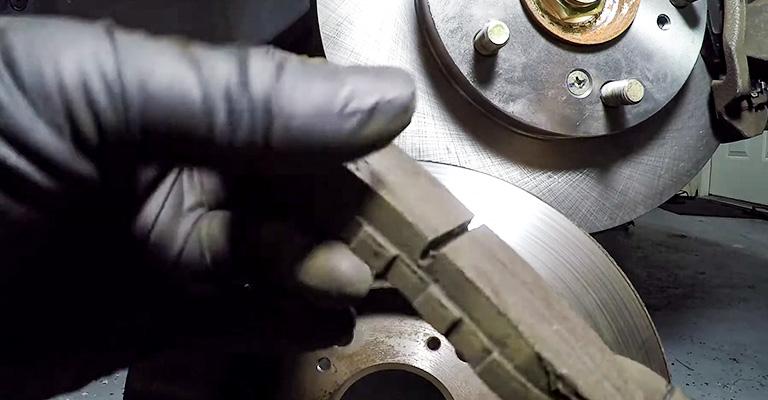Bedding your brake pad cant be said mandatory. But for the perfect protection and longevity of the brakes, bedding can be extremely helpful. Bedding supports minimize brake squeal and vibration by transferring an even layer of pad material onto the rotor.
Contents
Why Should You Bed Brake Pads? Is It Necessary?
Natural driving causes gradual damage to the brake. But if you want great performance out of the pads right from the very beginning, bedding is the way you should consider.

What Happens If You Don’t Bed in Brakes
Brakes are one of the most important parts of a vehicle. Unfaithful brakes can be the cause of great accidents. Without bedding, it’s actually tough to stop the car instantly.
Some believe that a brake rotor commonly beds in with daily use. So there’s no need for bedding in the process. But it will not provide any even layer. So this is a misconception. Not bedding your brake pads can cause some problems you may like to avoid.

Uneven Deposits
Without bedding, the adherent and abrasive friction mechanism won’t work properly. It will lead to uneven accumulations of brake pad material on the surface of the rotor, especially at high temperatures.
Reduced Braking Power & Control
A brake pad without bedding includes a decreased and uneven braking power. You may experience sloppy brakes as well. There will be a lack of braking control. Also, it will result in noisy brakes.
Decreased Lifespan
If you don’t do bedding, the lifespan of your brake pads will decrease due to more friction and less tolerance.
Uneven Contact of Brake Pad and Rotor
Though brake and rotor both have a flat surface, they are not exactly compatible. Only a minimal area of the pad contacts the rotor. Bedding solves this issue by providing the brake pad a larger area. But if you don’t do bedding, the uneven contact will remain there and results in a decreased brake modulation and vibration.
How to Bed in Brake Pads Mtb
If you’re looking for new pads remember that resin, organic or semi-metallic pads are quieter and softer. In the beginning, they are better but they fade faster than the metallic ones. Accurately bedding-in new pads are essential for your brakes to be fully operational.

There are a few things you can do before riding on any steep or busy road. After installing brake pads it needs some pressure to be in contact with the rotor properly. You have to produce enough heat to build up an even transfer layer. To do so first clean the rotor surface with a non-residual cleaner such as isopropyl alcohol.
While unpacking, do not touch the pad surface. Be careful about not touching braking surfaces as well after cleaning. Install the pad. Now get on the bike and speed up. After pedaling for a few minutes, lightly grab the brake lever and apply smooth pressure until the bike almost comes to a stop.
Don’t rush for quick stops, let the brakes drag the bike down to a steady speed. This is done to produce a limited amount of heat in the pads to establish the transfer layer uniformly. Repeat this 10-20 times.
New brake pads usually have a really smooth initial layer that doesn’t put much friction on the disc. So you scrub that layer carefully without damaging the brake pads for a better result. There’s an additional effective way. While the intervals of speeding up, pour pure waters right through the caliper onto the brake pads. It will save you from the risk of extra heat.
Bedding New Brake Pads on Old Rotors
Replacing only the pads is preferable to replacing the whole brake caliper including the brake rotor as it is not only cost worthy but also time-consuming. But there are a few things you have to keep in mind.
When a layer of the old pad stains the surface of the brake rotor, new pads become necessary. But here you also have to notice the rotor. If the rotor is completely worn out or damaged, bedding in new pads can never make it better. It’s not safe as well.
So, you have to change the rotor also along with the pads if they are damaged. But if they are old as a regular rotor will be, it’s utterly ok to keep them and replace the pads. To bed new brake pads you have to remove the surface layer first. Otherwise, the pads will not effectively adhere to the old rotor.
You can do this by using fine sandpaper, steel wool, or brake cleaner. You can rinse the surface with water as well. As a result, you’ll get a dainty bare-metal surface to transfer material from the brake pads.
Besides, you can’t follow the same steps mentioned above to bed in the pads. In this case, dragging the brakes is prohibited while the break-in procedure. It is also not suggested to use the brake pedals after you park following the process of brake-in.

Do You Need to Bed in New Brake Pads
Brakes usually work with two primary mechanisms. One is the abrasive mechanism and the other one is the adherent mechanism. At lower speeds, the abrasive mechanism works primarily. Your brake pad rubs against the surface and it creates friction. This friction results in heat and this heat are dissipated through the brakes. This makes your car stop.
At higher speed, the adherent mechanism works. in this case, a huge amount of heat is produced. This encourages the brake pads to wear against the rotor. But bedding creates a transfer layer between brake pads and brake rotors. So instead of wearing against the actual rotor, if you bed in pads, the pads will wear against this transfer layer. That saves the rotor and increases the lifespan.
However, for streetcars, bedding may not be that much needed. For tracking or driving in racetracks, bedding will offer better performance. Overall, bedding-in new brake pads are always preferable for safe control and a better braking experience.
How to Bed in the New Brake Pads?
The process is quite similar. General instructions are first speed up to 35 mph. slow down to 5 mph applying gentle brake pressure. repeat it 2-3 times. Then increase the speed up that is to 55 mph.
Use strong pressure to lower the speed to 5 mph. repeat this for 4-5 times. Drive as usual for 5-10 minutes to help the brakes steadily cool down. At last park your vehicle. Let the brakes cool down for about an hour.
Bedding Brake Pads Necessary
If you’ve come this far, you’ve probably understood the specifications of brake pads. But bedding brake pads are not exactly necessary. Even if you don’t do bedding, there is a huge possibility that you’ll never face any unwanted issues. If you follow the gentle braking applications or braking rules properly, it can be enough.
Bedding can be said necessary for tracking and high-speed applications such as racing. But in urban areas, it’s quite difficult to bed in the brake pads as the roads are never empty. And without proper bedding, the result can be worse.
However, if you have the chance to set the transfer layer, bedding can give you a better grip over the road. It will be used to inflate brake performance. Even deposits and heat dissipation enhance the total braking system.

FAQ
Q: How much time does it take for the new brake pads to bed in?
Ans: Fully bedding new pads to proper condition worn rotors may take 200-300 mile only. But if new discs are fitted at the exact time bed in times to gain outer to inner edge touch can be 800-1000 miles long because of additional components.
Q: How should My brakes feel after being altered?
Ans: Brakes gradually self-adjusts. You should never feel any difference other than the first pump after the change.
Conclusion
Bedding can be an amazing addition to your vehicle. Though we tried to point out everything related to the topic, it’s highly recommended to consult your owner’s manual or a licensed, professional mechanic before stepping up.
